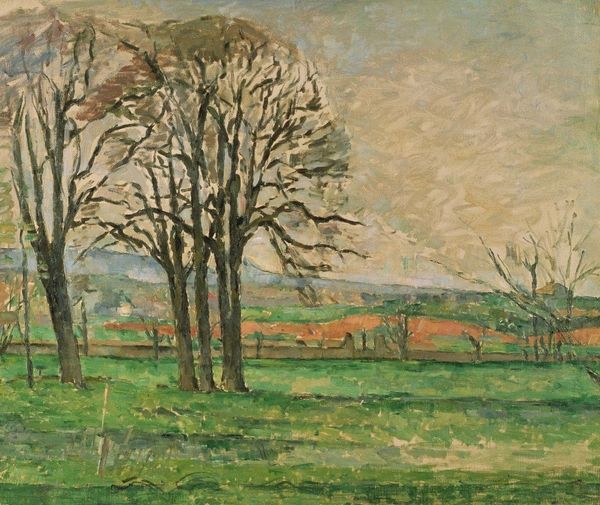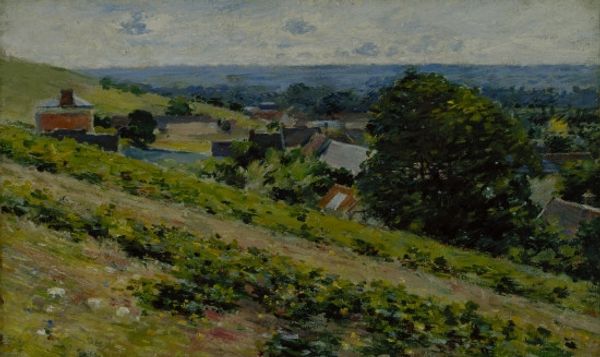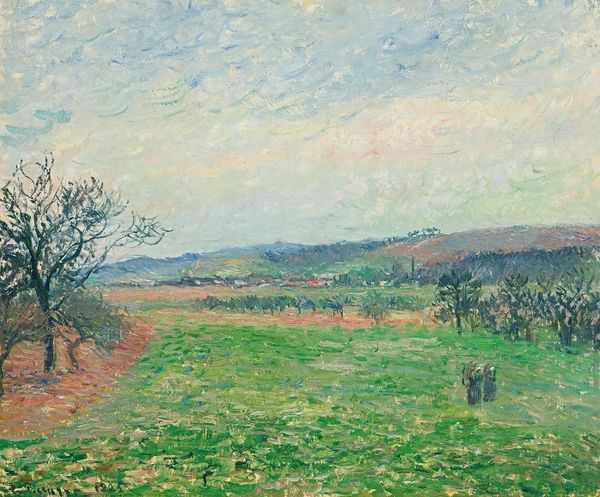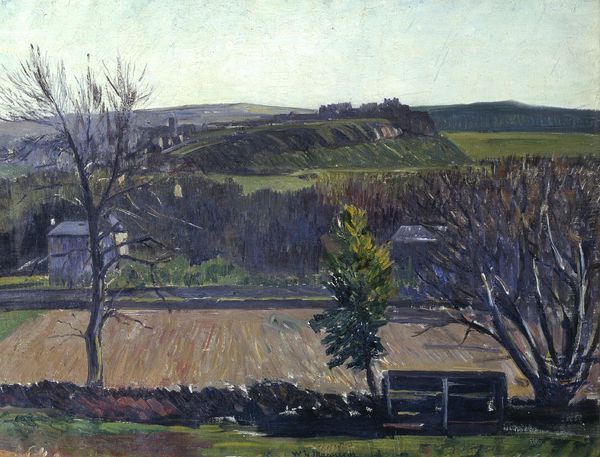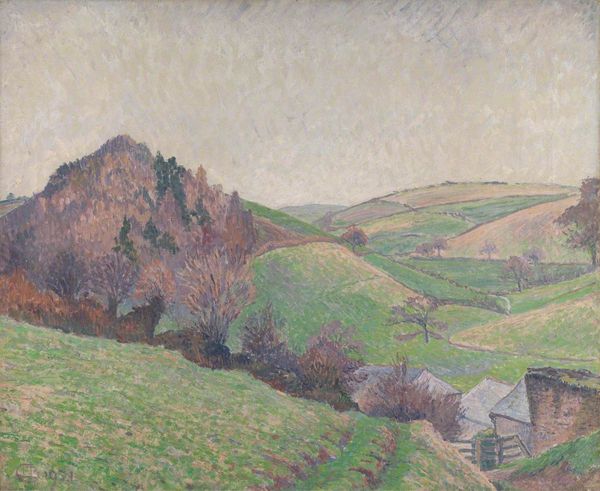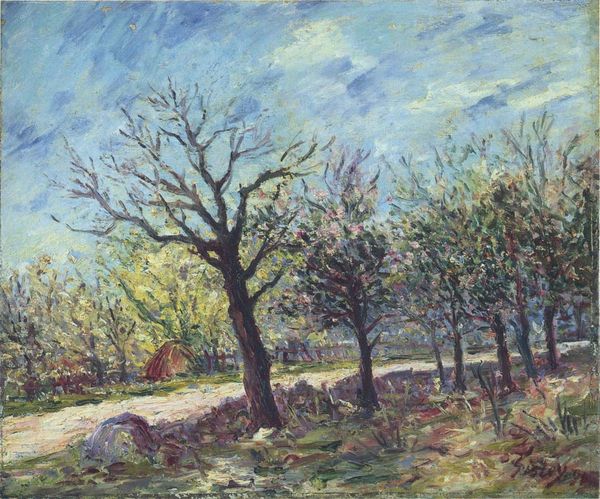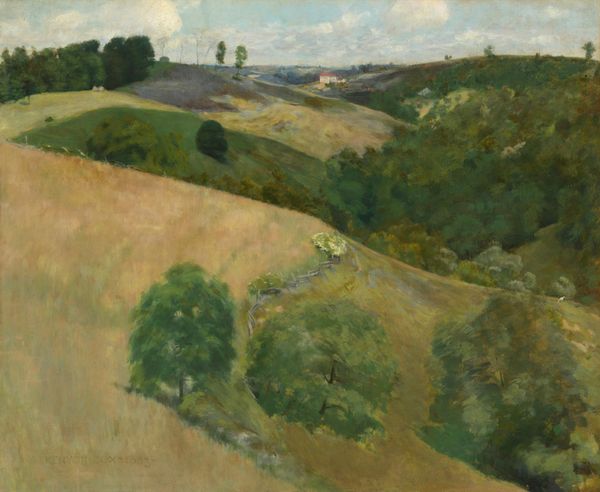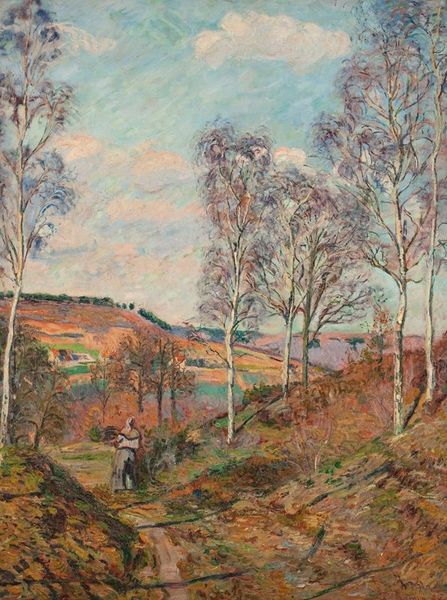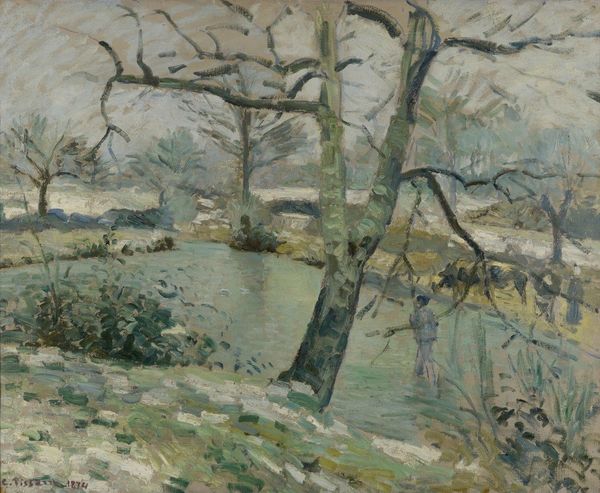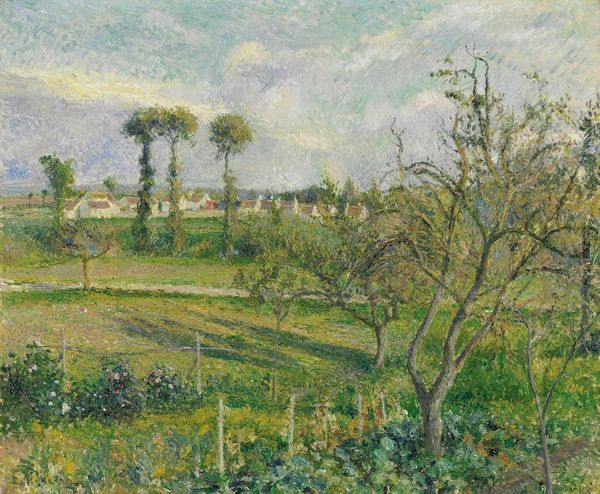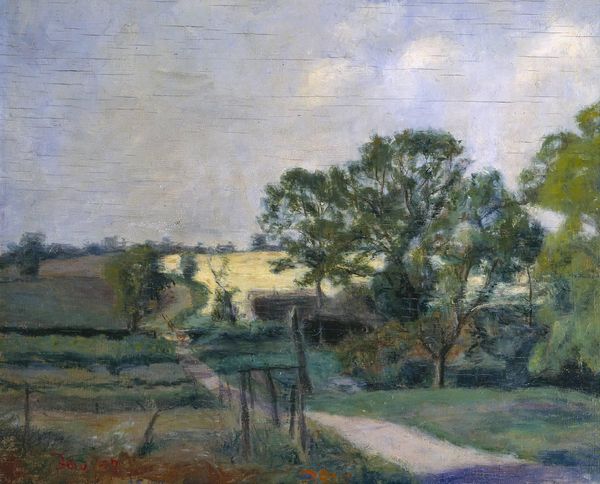
Copyright: Public Domain: Artvee
Editor: Right now we're looking at "Bougival," a landscape scene rendered in oil paint by Alfred Sisley in 1876. The composition feels divided by that little stone wall, with rougher, darker textures up close, fading into hazier and brighter areas in the distance. What strikes me is how…undecided the season feels. What do you make of it? Art Historian: It's a classic example of Impressionism’s engagement with modern life. Consider the historical context. This was painted during a period of rapid industrialization and urbanization in France. The Impressionists like Sisley, painted landscapes differently, moving away from idealized representations to capture a more immediate experience. Notice the unblended brushstrokes, the seemingly casual composition. How do these elements challenge the established academic painting norms of the time? Editor: Well, I guess it's less "grand" than landscapes you might see in a museum, and it feels like you're supposed to focus on the fleeting moment... How do you mean "challenge the established norms?" Art Historian: Academies at the time valued history, clarity and mythological themes...This artwork and others like it challenged official patronage. Rather than paint scenes commissioned for cathedrals, the artist is going "en plein air," or, outdoors. The subject matter is nature itself as the object, the fleeting moment. And this act in itself becomes an endorsement, a celebration of it, by virtue of its depiction, don't you think? How does this inform its interpretation today? Editor: So, Sisley’s not just showing us a place, he's making a statement about what's worth depicting? This work is about valuing those ordinary views that exist regardless of whatever's going on with the academies and rich patrons? I see the cultural implications much more clearly now! Thanks! Art Historian: Exactly. The power dynamics between the official Salon system, independent artists, and the emerging art market helped to shape artistic practices and viewer reception during this period, making "Bougival" both a painting and a social commentary.
Comments
No comments
Be the first to comment and join the conversation on the ultimate creative platform.
